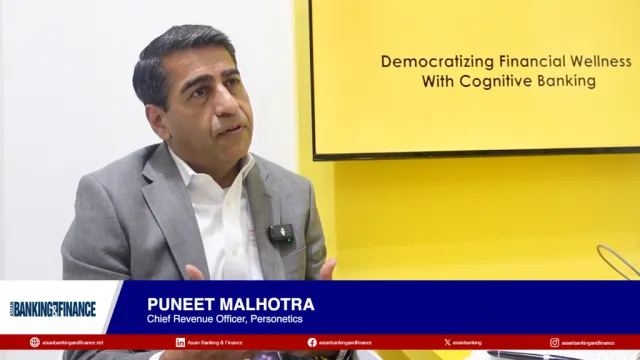How technology and regulation are reshaping the lending landscape
By Matt RiggallAsia's lending shifts fast: tech, AI, and regulation reshape how banks compete and lend.
The Asian lending market is undergoing a profound transformation as banks navigate an increasingly complex mix of regulatory pressures, technological disruption, competition from private credit and evolving borrower expectations. These fundamental shifts are reshaping how banks in Asia originate, structure, and manage syndicated loans and bilateral lending arrangements across all major markets.
The Speed Imperative: Competing in a Borrower's Market
Perhaps the most immediate challenge facing banks today is the need to compete on speed of decision-making with the rapid growth of non-bank lenders in the region. Recent discussions at the Asia Pacific Loan Market Association (APLMA) have highlighted how syndicated loan transactions are becoming more complex while simultaneously operating in what has become a distinctly borrower-friendly market environment.
Banks are having to compete on both speed and price, as borrowers expect quick decisions on complex deals. Financial institutions that cannot adapt to these accelerated timelines risk being left behind in an increasingly competitive landscape.
This pressure for rapid decision-making comes at a time when loan volumes have hit concerning lows. Globally, first-quarter lending volumes have reportedly reached their lowest levels in approximately a decade, creating additional pressure on banks to capture available opportunities quickly and efficiently.
The Capital Conundrum: Hold or Distribute?
Behind the scenes, banks face sophisticated decisions about capital allocation and balance sheet management. Three key factors are driving banks toward moving loans off their balance sheets rather than holding them traditionally.
First, the disproportionate impact of Basel regulations compared to non-bank lenders requirements creates economic incentives to transfer risk. Second, decarbonization pressures mean banks are actively seeking to move high-emission borrowers off their balance sheets to meet environmental targets. Third, advances in tokenization technology now enable banks to scan loan contracts using machine learning, identify attractive portions of newer transactions, and sell them to third parties.
The reality is that current technology for capturing carbon emissions, and the availability of carbon credits and offsets remain insufficient to support traditional balance sheet approaches. Moving high-emission assets off the balance sheet represents one pathway to effective decarbonization, though this approach doesn't necessarily contribute to the broader net-zero transition – it primarily serves as balance sheet management.
Technology as the Great Enabler
The shift from "originate to hold" to "originate to distribute" models is where technology becomes crucial. Banks in Asia are looking at hybrid approaches where they can quickly originate loans while maintaining the flexibility to either hold them on balance sheet or move them to secondary markets based on evolving capital requirements.
The challenge many banks face is legacy infrastructure. Batch-based systems that perform calculations at end-of-day, end-of-month, or end-of-quarter intervals prevent banks from calculating fair values in real-time, limiting their ability to trade loans efficiently in secondary markets.
To get ahead, banks are now leaning into technology solutions that span the entire loan lifecycle, from initial capital planning and allocation through loan origination, syndication, and ongoing servicing. This comprehensive approach helps banks make informed decisions about whether to retain loans or distribute them based on regulatory capital requirements versus economic capital needs.
The AI Revolution
Artificial intelligence represents perhaps the most significant technological shift in lending operations. The industry is moving from "AI in the loop", where AI handles 10-20% of activities, to "human on the loop" models where AI performs approximately 80% of the work while humans provide oversight, auditing, and expert judgment.
While the complex nature of syndicated lending requires human expertise for critical decision-making, AI can effectively handle the substantial documentation and analysis workload. This includes generating drafts of deal memos and credit memos - documents that can span hundreds of pages and currently require significant manual effort. AI can also tokenize loan agreements, extracting terms, conditions, covenants, and pricing information to automate booking processes, reducing post-approval booking time from days to hours.
However, many banks remain cautious about AI implementation, focusing on data security and governance. The establishment of Chief AI Officers and senior-level AI governance committees reflects the industry's careful approach to production deployment of AI systems.
Regulatory Challenges and Digital Assets
The regulatory landscape presents both challenges and opportunities. While Basel regulations create capital pressures, regulators in markets like Singapore, the Philippines, and Hong Kong are actively exploring digital assets and blockchain technologies for lending applications.
The evolution of regulatory frameworks presents a concerning paradox. The original Basel standard comprised just 36 pages, while the current consolidated Basel standard exceeds 1,500 pages. Despite having access to more data and sophisticated technology than ever before, the industry finds itself moving toward standardized approaches rather than leveraging these enhanced capabilities for more nuanced risk assessment.
Despite regulatory complexity, forward-thinking financial institutions are pushing boundaries with digital asset initiatives, partnering with technology providers to explore tokenization and decentralized finance applications.
Looking Ahead
The lending landscape is evolving toward greater complexity and sophistication. Future syndicated loans may involve hundreds of participants rather than just a few, enabled by tokenization technology. Banks must balance borrower expectations for speed and competitive pricing with regulatory requirements and stakeholder demands for profitability.
Success in this environment requires banks to embrace advanced technologies that can handle growing complexity while maintaining the speed and flexibility that modern markets demand. The transformation is already underway. The banks that can effectively integrate AI, manage capital efficiently, and maintain agile lending operations will be best positioned to thrive in this rapidly evolving landscape.




















 Advertise
Advertise







